Brief Notes, December Part Two
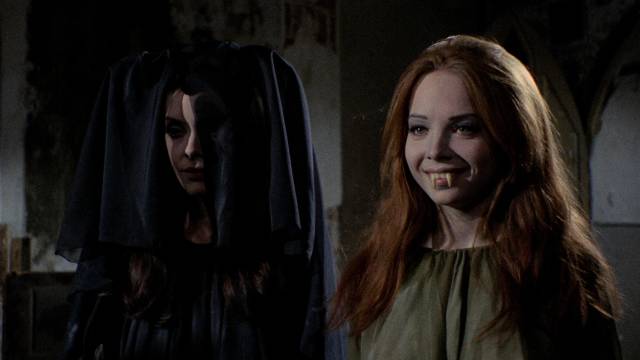
Looking over the pile of recently-watched Blu-rays by my desk, I find there’s not a lot to say about most of them. Does that mean I’m increasingly wasting my time when I ought to be concentrating on more challenging and worthwhile movies? Probably…
Of the most recent acquisitions from Vinegar Syndrome, only a couple really warrant a thoughtful comment … as for the rest: Rick Rosenthal’s belated and misguided “sequel” to Alfred Hitchcock’s The Birds, The Birds II: Land’s End (1994) is an act of hubris which merely illustrates how good the original is by falling so far short. Rosenthal obviously recognized this as he took his name off the final product, which is credited to Alan Smithee. Leon Klimovsky’s The Werewolf vs Vampire Woman (1971), despite a 4K restoration and a reputation for being one of Paul Naschy’s best movies, is slow and dull, with occasionally effective imagery – Naschy has an avid fan base, but in the handful of his movies that I’ve seen he seems an uninteresting and uncharismatic actor. Buried Alive (1989) interested me because it was directed by Gerard Kikoine, whose Edge of Sanity I recently saw and liked; although it displays a strong visual sense, the overwrought performances fail to inject much life into a thin story about a mad doctor running an institute for rather over-age delinquent “girls”. I love Donald Pleasence, but here he delivers nothing but a collection of really irritating acting tics.
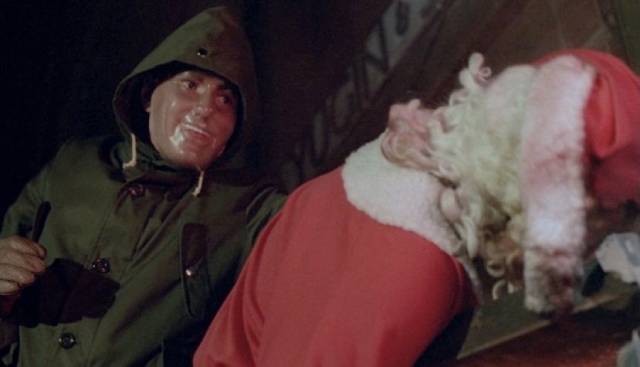
Tobe Hooper’s The Texas Chainsaw Massacre 2 (1986), also getting a 4K restoration, has terrific production design, but otherwise offers an overblown retread of the original which buries the horror elements under strained comedy. Intended as star Edmund Purdom’s directorial debut, Don’t Open Till Christmas (1984) was taken over by Alan Birkinshaw who did what he could to salvage a slasher about someone killing Santas on the streets of London in the days leading up to Christmas; it has its moments, and some fairly graphic murders, but remains an unfocused mess. Shock-O-Rama Video Party (from AGFA) is a collection of four cheap exploitation movies made between 1953 and 1968, all sourced from low-quality video sources, with occasionally engaging twists amidst a lot of repetitive footage of talky scenes and flashes of nudity. As for KFC (2016, from Dekanalog), a Vietnamese movie directed by Le Binh Giang, it’s a structurally confusing mess full of perversion and extreme violence which circles around an actual KFC fast food joint in what may be the most unusual (and no doubt unauthorized) case of product placement in cinema history.
The two disks which stand out are a surprisingly good restoration of one of the best ’70s made-for-TV horror movies, Daniel Petrie’s Moon of the Wolf (1972), and New Zealander Garth Maxwell’s Jack Be Nimble (1992, from Altered Innocence).
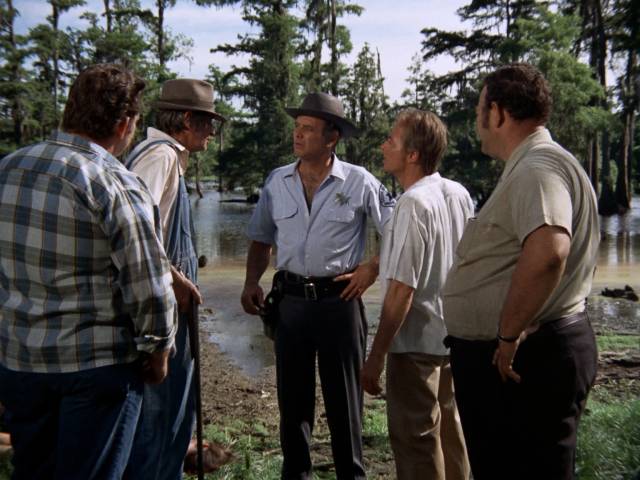
Moon of the Wolf (Daniel Petrie, 1972)
Moon of the Wolf was adapted from a novel by journalist and author Leslie H. Whitten which I had read a few years earlier and, while the limitations of broadcast television and the relatively brief seventy-five-minute running time necessitated narrative compression and an oblique treatment of the story’s more visceral horror elements, it’s nonetheless a fairly faithful adaptation. Set in Louisiana, the movie has a strong regional atmosphere which adds to the folk horror ambience of a murder mystery which is gradually revealed to be a werewolf story.
When a young woman’s badly mutilated body is found in the bayou, her death is initially attributed to wild dogs, though her family suspect murder. Sheriff Aaron Whitaker (David Janssen) has to keep a lid on the locals’ simmering anger as he investigates. There’s a fairly large cast of characters to keep things interesting – the dead woman’s brother Lawrence (Geoffrey Lewis); the farmer and his son who found her, Tom Sr. (Royal Dano) and Tom Jr. (John Davis Chandler); town doctor Druten (John Beradino), who turns out to have been her lover; Andrew Rodanthe (Bradford Dillman), the scion of the town’s founding family, and his sister Louise (Barbara Rush), who recently returned from the big city and begins a tentative romance with the Sheriff.
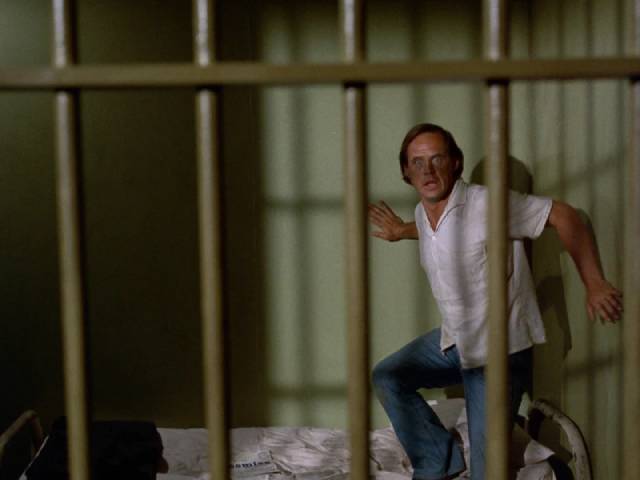
As it becomes clear that there’s a monster loose in the area – the victim’s ailing Cajun father Hugh (Paul R. DeVille) keeps muttering and yelling an obscure phrase which Louise eventually identifies as “loup garou”, a folk term for werewolf – the short running time doesn’t leave a lot of room for the werewolf’s human identity to be teased for long, but even with that element of suspense curtailed there’s a satisfying arc to the narrative. For those of us who lived through the heyday of made-for TV horror, movies like this were eagerly anticipated and now, decades later, have a strong nostalgic appeal. Moon of the Wolf was one of the best and it holds up surprisingly well with a 2K restoration on the Vinegar Syndrome Archive Blu-ray, which includes a commentary track from film historians Amanda Reyes and Daniel R. Budnik and an interview with editor Richard Halsey.
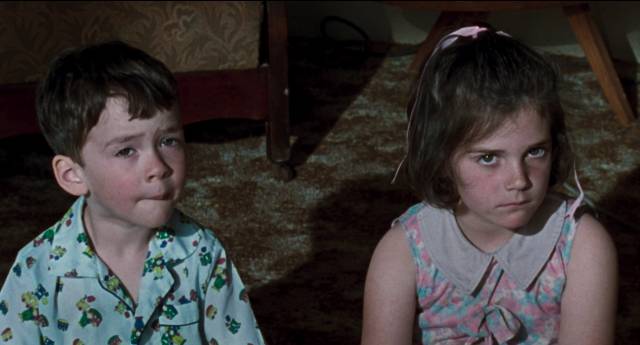
Jack Be Nimble (Garth Maxwell, 1992)
Garth Maxwell’s Jack Be Nimble is an oddly unclassifiable movie, part psychological horror, an even bigger part fairy tale. There are strange elements which remain largely unexplained, a storybook colour palette and dark narrative turns in the tale of two children separated at a young age, yet remaining psychically linked as they grow up. At the start, brother Jack and sister Dora witness the suicide of their mother, in despair after being abandoned by their father. Placed in a creepy orphanage, the siblings are adopted separately – Dora to a loving family, Jack to a nightmare family of abusive parents and four creepy sisters.
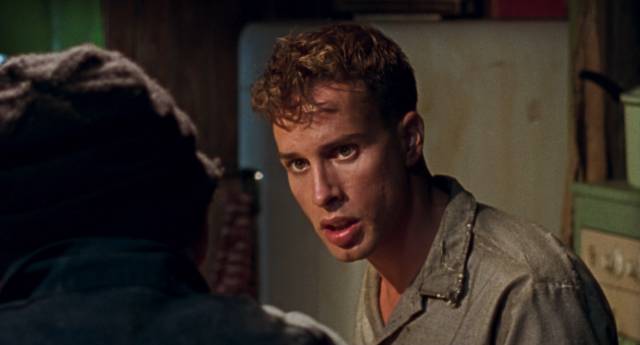
Dora grows up troubled by visions and hard-to-grasp psychic intimations, bullied by other girls at school who single her out as weird. Jack is savagely beaten by his adoptive father for the slightest transgression – such as talking to a neighbour kid. With little interest in academic work, his school reports are bad, which triggers more abuse. But he has a real knack in shop class and one day brings home a strange device he’s built. Opening it up at the dinner table, he sets it in motion by lighting a candle which heats a small water vessel, generating steam which powers a little generator; the movement and flashing lights hypnotize everyone at the table and he has the parents go out and commit suicide – dad by lying down in the path of a semi on a nearby road, mum by climbing out on a branch until she falls into a rushing river. Leaving the four sisters in a trance, Jack packs up and heads for the city.
The psychic bond between the siblings gradually draws the pair together, with Dora assisted by an older man named Teddy (Bruno Lawrence) who also seems to have psychic powers; for her, he’s a kind of father figure, which makes his obvious sexual interest in her disturbing. Meanwhile, Jack is pursued by the four creepy sisters, intent on revenge and killing everyone they encounter in their search. Things get grimmer as the threads eventually connect, leading to cruel deaths and a climactic explosion of psychic energy.
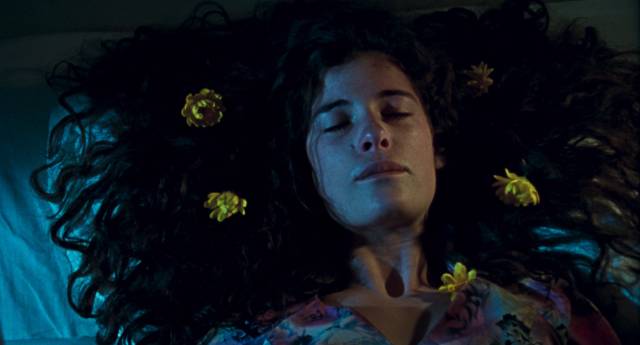
Maxwell’s feverish visual style is matched by the eccentric performances of Alexis Arquette as Jack and Sarah Smuts-Kennedy as Dora, with Tony Barry and Elizabeth Hawthorne (as Jack’s adoptive parents) and Lawrence providing strong support as the menacing fairy tale adults, and ten young actresses as the creepy stepsisters at various ages. The film generates an unsettling atmosphere which begins by creating empathy for Jack and Dora, but becomes more complicated as their responses to the abuse they suffer become more problematic and violent.
Maxwell, as a gay filmmaker, has a nuanced view of those who fall outside society’s norms and the ways in which society tries to contain and suppress difference. Among the disk’s substantial extras are his early short feature Beyond Gravity (1988), a more straightforward, autobiographical gay love story which avoids cliches and sentimentality, and a half-hour documentary portrait of Doug George, a shoe designer and fetishist. There’s also a commentary and two interviews with Maxwell covering the film itself and the relationship between his work as a filmmaker and coming out in a conservative country.
*
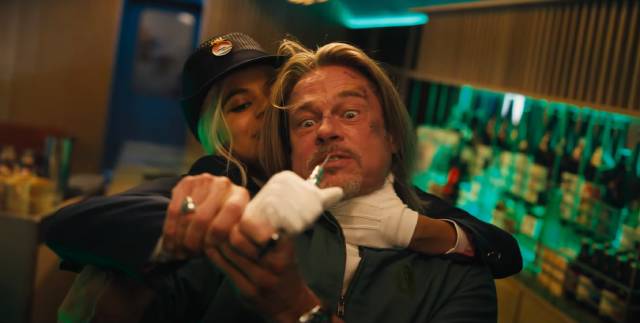
Two big budget Hollywood action movies I’ve just seen might as well have come from a completely different planet. I didn’t really have a good reason to watch either one, other than that when such movies hit their mark they do provide a visceral satisfaction that I can appreciate. Neither of these found that sweet spot.
Bullet Train (David Leitch, 2022)
David Leitch, a former stunt coordinator associated with the John Wick franchise as a producer and uncredited co-director, can undeniably stage action sequences, but it’s always in a knowing, self-referential context which transforms everything into pastiche. He had a relative popular and critical success with Atomic Blonde (2017), partly due to the casting of Charlize Theron as a kickass female Bond-like agent mixed up in a complicated plot in Cold War Berlin. But everything played as pastiche, rather than grounding the gender switch in anything like even an ersatz reality. Endless fight scenes were staged in a weightless world which referred only to already over-familiar movies – the cliches were the movie’s raison d’etre and the audience was never expected to become seriously invested in the character or story.
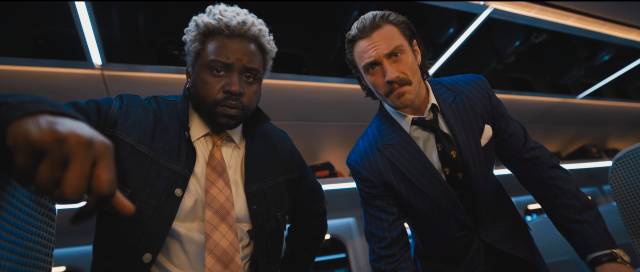
Bullet Train (2022) continues down that path, without even a nod towards the real world. Packed with bone-breaking fights and vicious violence, the movie is devoid of consequences. It’s all a joke and the savagery is just a string of gags about which the characters crack wise. I have a real soft spot for movies set on trains, but this one’s train never feels real – the lengthy fights are never noticed by passengers and staff, and in fact eventually there’s no one on the train at all except the collection of gangsters and killers who are all involved in a plot concerning a kidnapping, a briefcase full of money, and various types of personal revenge. Since no one has to conceal what they’re up to, the constrained setting of the train is kind of redundant – and it’s eventually abandoned altogether for the climax.
So all we’re left with for entertainment is a talented cast playing a bunch of live-action cartoons, which is amusing for a while, but wears thin over two-plus hours.

Top Gun: Maverick (Joseph Kosinski, 2022)
Even that thin trace of amusement is absent from Top Gun: Maverick (2022), a very belated sequel to Tom Cruise’s early box office hit. I was no fan of that glossy Tony Scott promo for the American military, so was dubious about the new movie despite the seemingly rapturous reviews and big post-Covid box office reception. What made me finally take a look was that it had been directed by Joseph Kosinski, whose first two movies I liked a lot (Tron: Legacy [2010], Oblivion [2013]).
I shouldn’t have bothered. The military bombast is the same, the testosterone barely mitigated by the addition of a female pilot. Once again, the U.S. military has no choice but to secretly invade another country and risk triggering a major war in order to carry out an “impossible” mission – all while a bunch of hot-shots flex their egos and work out personal conflicts which threaten the mission’s success.
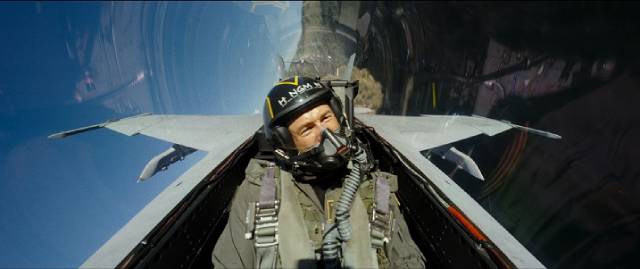
As for that mission, it absurdly repeats the final attack on the Death Star in Star Wars, complete with the flight through a trench heavily protected by ground-to-air missiles and the climactic firing of a missile into a one-meter diameter air vent to destroy the underground uranium processing plant. For added measure, the final pilot, plagued by issues of self-confidence, loses his bomb’s laser-guidance and has to stop thinking and trust his instincts to hit the near-impossible target – you know, close his eyes and trust the Force. I couldn’t believe this nonsense made it past the story conference stage, let alone survived the input of five separate writers. And yet audiences and critics ate it up and hailed the result as a return to Hollywood greatness. I guess the fetishization of the U.S. military and its “right” to operate anywhere on the planet never grows stale.
I often feel out of sync with popular taste, but this rises to a new level. Maverick’s one saving grace is that the star power and budget enabled Kosinski to shoot a lot of it in real planes, which gives it a visual dynamism CGI wouldn’t have been able to achieve.
Comments
For what it’s worth I had exactly the same reactions to Bullet Train and both Top Guns.
It’s always reassuring to know I’m not alone!
I agree that Moon of the Wolf was a great tv movie. I have the movie inside a big 50 sci-fi movie box set, but as you can imagine the image quality is poor. I would love to get this upgraded version!
I’m a big fan of 70’s tv movies and other made for tv movies like Duel or Bad Ronald are very memorable to me.
As for Jack Be Nimble… I remember renting the video version many years ago and liking the movie very much.
On a personal note Kenneth, I do hope you make a fast and full recovery from your recent heart attack!
Thanks for the good wishes, Kevin.
There were some great made-for-TV movies in the ’60s and ’70s and it’s good to see some of them being released on Blu-ray with excellent transfers – those old DVD sets often had unwatchable copies.
I first saw Duel in a theatre in London in the summer of 1975, so it’s never seemed like a TV movie to me. It played really well on the big screen.